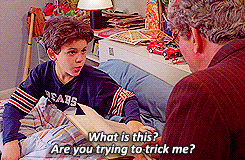You may have heard of Jeff Bezos. The world’s richest person is responsible for building a company that never stops growing, and whose influence has reshaped entire industries. But, of course, Bezos himself is not single-handedly responsible for every game-changing idea Amazon has. Because more than just being an innovator, Bezos is an incredible manager, and his team management skills are a large part of Amazon’s success.
Bezos’s techniques for hiring, team-building, and communicating are often surprising at first glance, but they have been undeniably successful in making Amazon the behemoth it is today. Any manager who wants to encourage Amazon-style boldness can take a page from the book of Bezos. So let’s talk about how to manage a team, according to Jeff Bezos.
Two-Pizza Teams to Keep Teams Agile and Collaborative
One of Jeff Bezos’ most famous axioms of team management is that every team should be small enough that you can feed them with two pizzas, so no more than five to seven people. (This idea requires that you imagine either very large pizzas or five to seven team members who are still full from breakfast.) According to former Amazon senior VP David Risher, the idea was born at a company retreat in the late ’90s, during which some people were discussing a need for greater communication between teams, to which Bezos forcefully interjected, “No, communication is terrible!” From this first, shocking pronouncement, the two-pizza rule was born.

While “communication is terrible” might be an overstatement, keeping teams small is a winning strategy to boost productivity. The Guardian calls the two-pizza rule “the secret of Amazon’s success” because of the way it facilitates both efficiency and greater scalability.
Most managers have observed that the bigger the team, the more communication takes place. But it’s not the kind of rich, productive communication that leads to new ideas; it’s the tedious work of coordinating schedules, waiting for responses to emails, and the like. As organizational expert J. Richard Hackman writes in The Psychology of Leadership: “The larger a group, the more process problems members encounter in carrying out their collective work—social loafing, the misweighting of members’ contributions, and so on.”
The internal health of teams improves with smaller numbers, and the health of a company improves when these small teams are equipped to function independently, as Amazon has done in expanding its business into so many seemingly disparate elements.
How to manage a team this way: If you want teams that can move quickly, keep their numbers small and cut down on unproductive communication. The same rule applies to meetings. The more members of your team that are sitting around the conference table, the less likely it is that anyone will speak up, so keep group interactions, meaningful, productive, and lean.
Accountability will increase, as will commitment, because your team members will be managing a small number of strong relationships rather than a vast web of weak ones. (Also, whenever possible, bring two actual pizzas.)
Want to be a better manager with a happier, healthier and more effective team?
Sign up for a free coaching consultation with Uptick Co-founder Chris Zaugg to improve your team’s effectiveness by connecting relationally.
A Ban on PowerPoint to Encourage Deep Thinking
In 2004, Bezos sent an email to his senior leadership team, banning the use of PowerPoint, a commitment he reiterated in his 2018 annual letter. Bezos asks executives to stop presenting slides during meetings, and instead to write six-page narrative memos, which the team then reads together in silence before a discussion.
In his original email, Bezos explained the reasoning behind this decision: “[T]he narrative structure of a good memo forces better thought and better understanding of what’s more important than what and how things are related.”

Source
Presenting an idea in the form of fleshed-out writing instead of bullet points is good for both the writer and the reader. A memo forces the writer to persuade the reader with a concrete document instead of the writer just trying to charm their way through a quick presentation. And readers take in new information much better when they are given space to sit with it and absorb it rather than just watch it fly by and be replaced by the next slide.
It’s also no accident that these memos are called “narratives,” or that Bezos alludes to “narrative structure” in his email. Using storytelling techniques makes writers reason out every step of their argument in a linear fashion that connects ideas to causes and consequences.
For example, compare the following two ways of conveying information. One, a narrative:
Since 2005, we have stocked the break room with single-use coffee pods. An employee who drank five cups of coffee per week, starting in 2005, has now produced enough plastic waste to choke a blue whale to death. Our commitment to a more sustainable office demands that we switch to drip coffee.
The other, a list of facts:
- Single-use pods are bad for the environment.
- The average employee drinks five cups of coffee per week.
- 5 x 52=260 pods per person, per year.
- Switching to drip supports the Sustainable Office Initiative.
Writing out thoughts in narrative form makes a bigger impact on the reader than mere data points, because humans understand stories on a deeper and more emotional level than mere data. Stories persuade, inspire, and open up the brain to new ideas, and that’s what makes them one of our most powerful management tools.
How to manage a team this way: Don’t lean on bullet points and pretty graphics to present your ideas (and don’t let your team do it either). Instead, be willing to do the hard work to fully explain what you’re saying, and do it in a way that tells a story. Frame your ideas as part of a larger narrative and your team will be much more receptive to them because they’ll feel like part of the story.

Hiring and Nurturing Mavericks to Embrace Innovation and Challenge the Status Quo
In a 2018 public forum, Jeff Bezos spoke about the qualities he looks for in hiring and promotions: “Does this person like to be innovative? Do they have a bit of a pioneering spirit?” He even went so far as to say, “Maybe they’re also a little bit annoying because they might be a little bit radical or a bit of a rebel.”
When you’re choosing from job candidates, your initial impulse might be to favor the person you don’t think will rock the boat. But it’s worth considering peppering your team with different skill sets, and that includes social skills. These are the people who won’t be afraid to challenge the conventional wisdom, even if it comes at a social cost.
In his 1998 letter to shareholders, Bezos said that he wanted his managers to base their hiring decisions on three questions:
- Will you admire this person?
- Will this person raise the average level of effectiveness of the group they’re entering?
- Along what dimension might this person be a superstar?
These questions are designed to favor candidates who aren’t just competent—they’re special. Of course, it should be noted that Bezos has also said that the “maverick” type of employee shouldn’t dominate your entire team but should serve as a counterbalance to people who might be more conformist and easier to get along with. “I wouldn’t recommend having 90 percent mavericks,” he says. To that we’d add Netflix’s famous credo of staying away from “brilliant jerks.”
How to manage a team this way: There’s absolutely something to be said for hiring people with a radical streak and who aren’t afraid to speak up. But effective team leaders encourage this spark of nonconformity even in team members who aren’t “a little bit annoying.” When you encourage radical honesty in the workplace—including opening yourself up to criticism from your team—you make everyone feel safer speaking up. And by forging a genuine connection with team members and creating an atmosphere where people are unafraid to fully be themselves (imperfections included) at work, you invite them to share bold ideas.
How to Manage a Team like an Amazonian
All the ideas we’ve discussed here seem counterintuitive on the surface, but peel back a layer and they’re really about the fundamental truths of leadership. You probably already know that individuals perform better when they’re accountable to a small group of close colleagues. You’ve probably already observed that ideas work better when they are fully supported and connect to people on an emotional level. And, hopefully, you aren’t afraid to create an environment where dissenting ideas are encouraged.
But by keeping those concepts top of mind and returning to them with Bezos-level confidence and Bezos-level energy, you can infuse your own management style with some of Amazon’s magic.
Want to be a better manager with a happier, healthier and more effective team?
Sign up for a free coaching consultation with Uptick Co-founder Chris Zaugg to improve your team’s effectiveness by connecting relationally.


